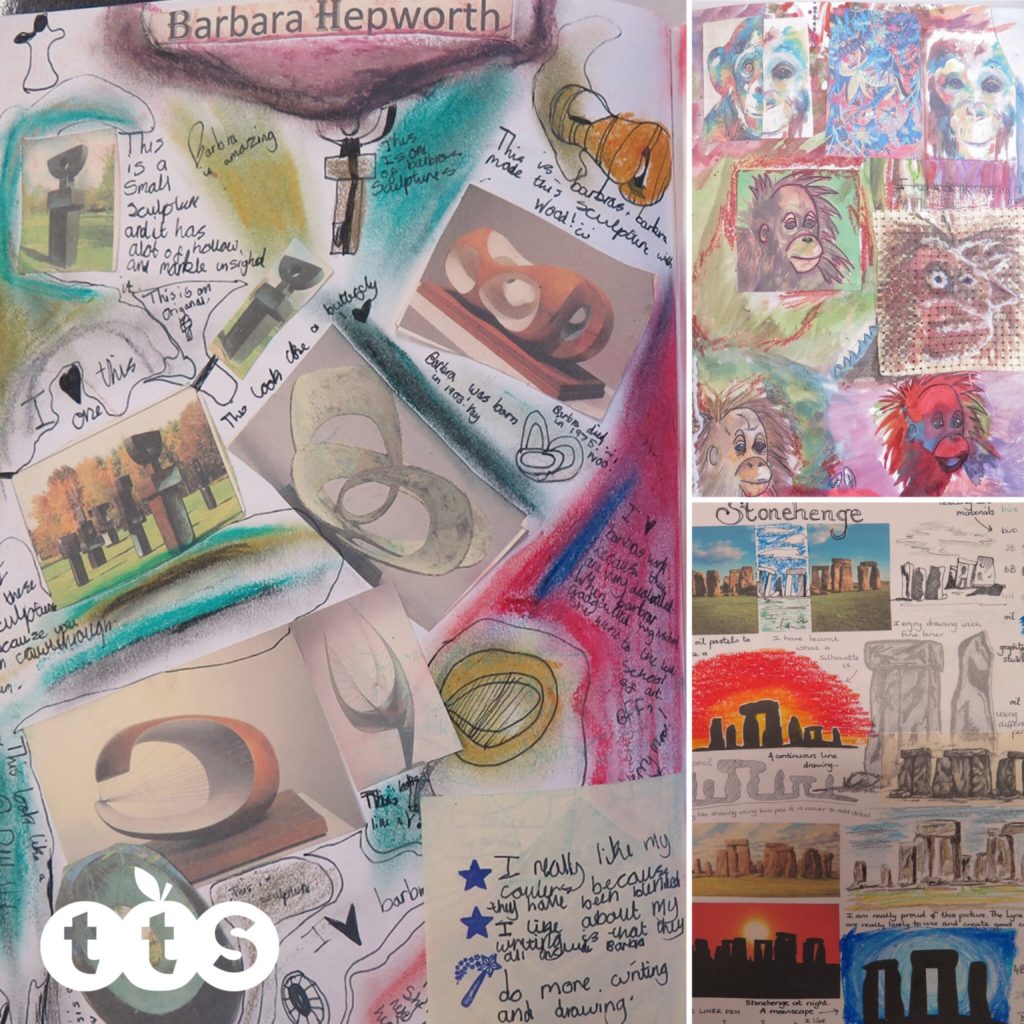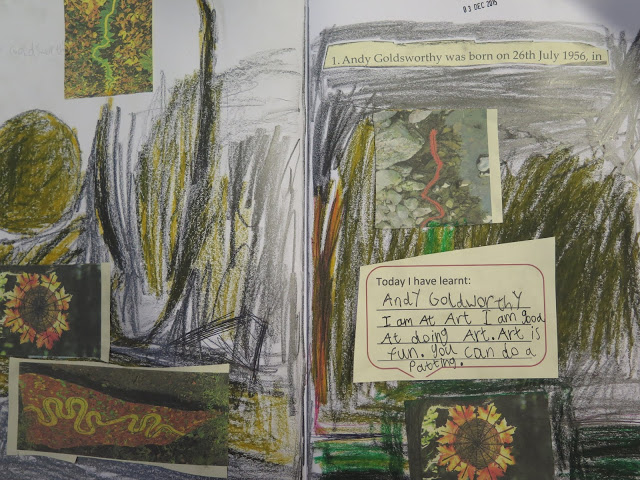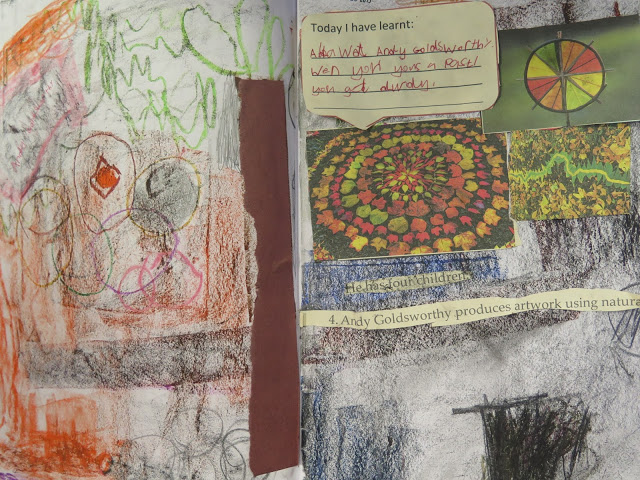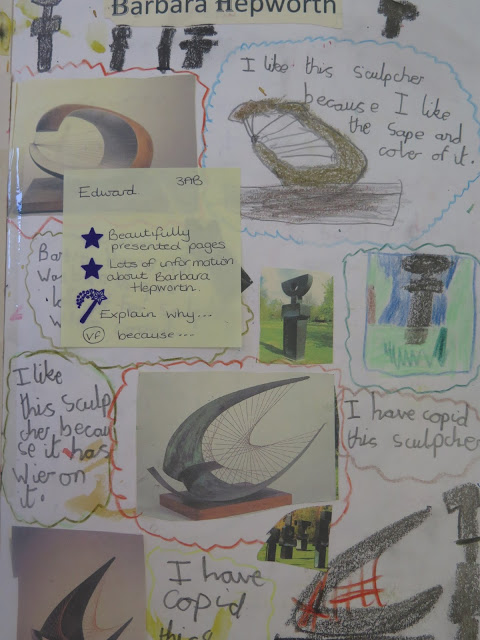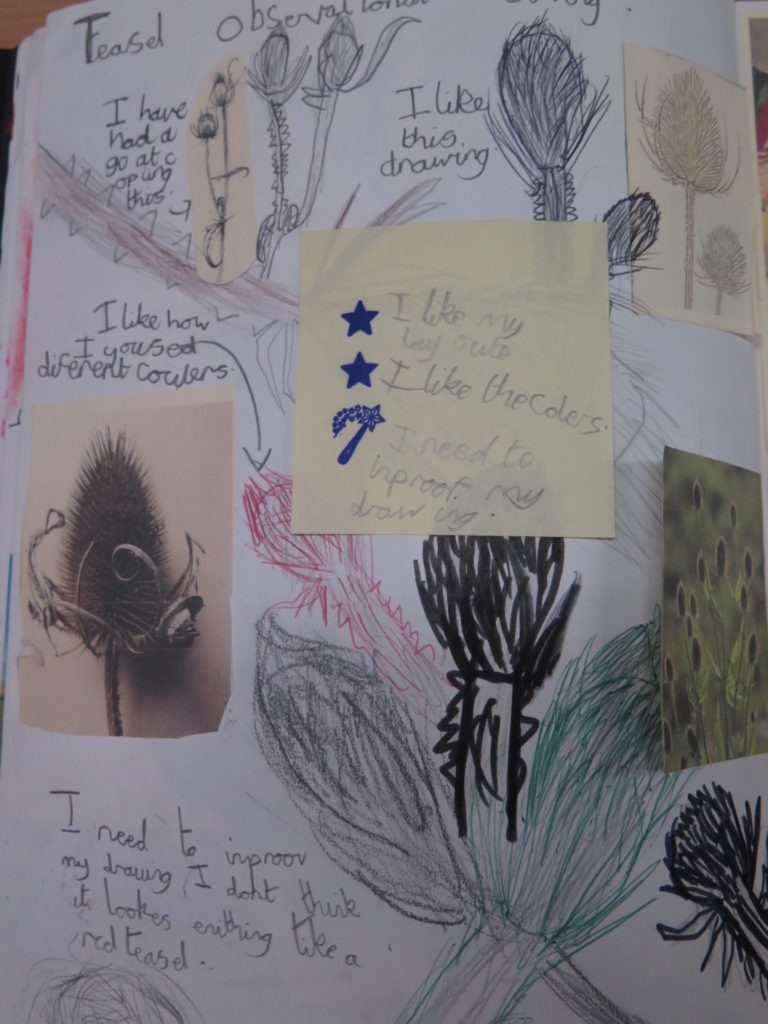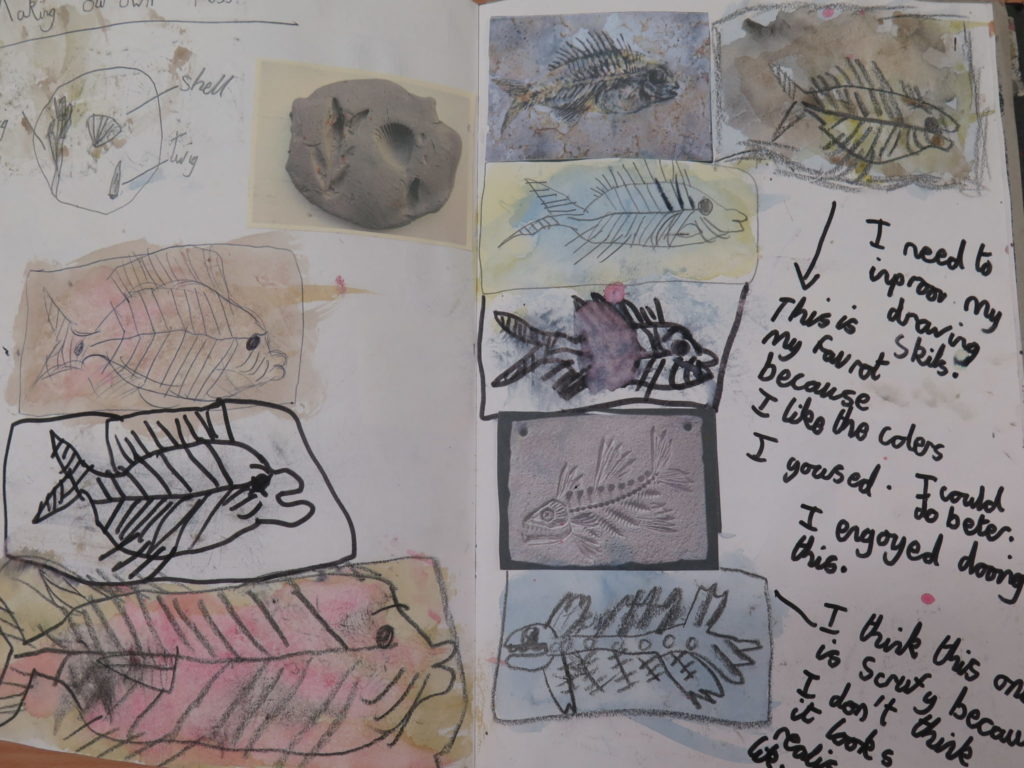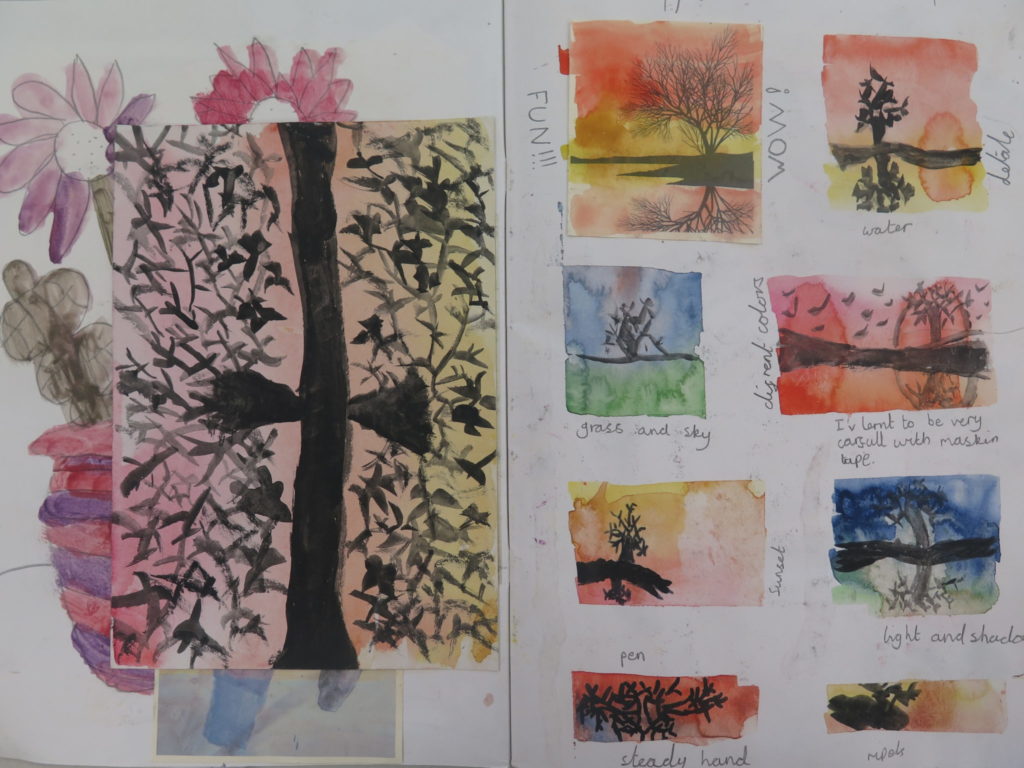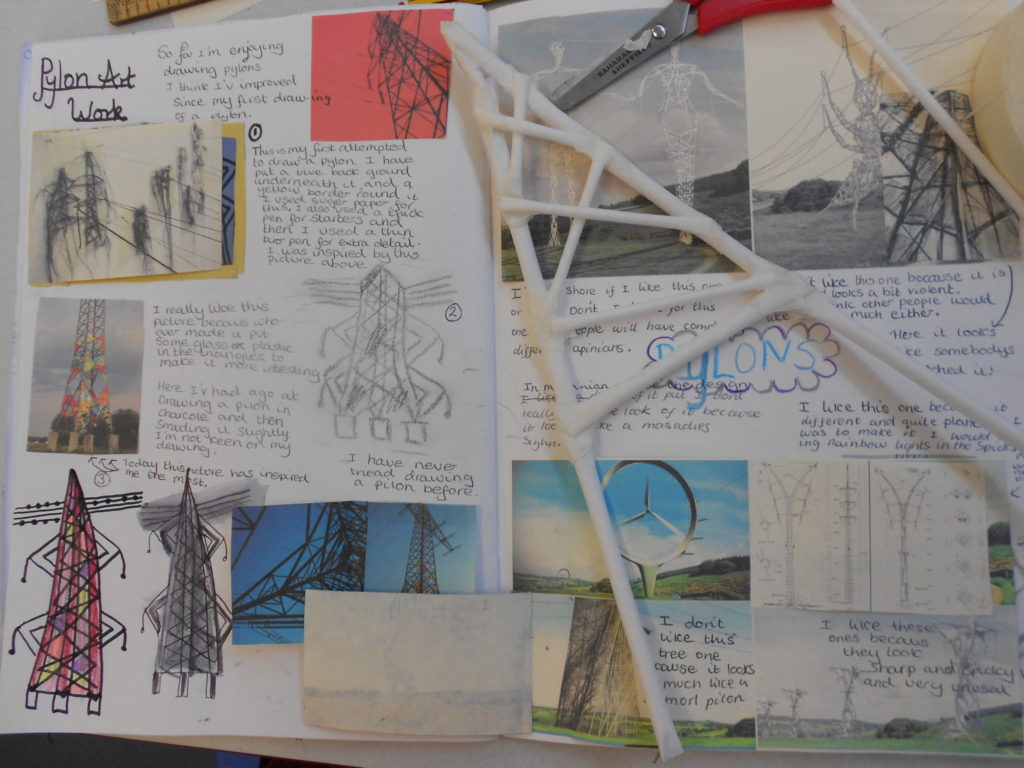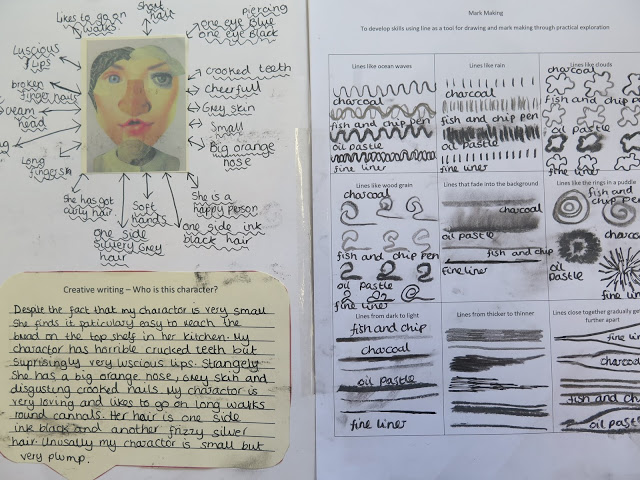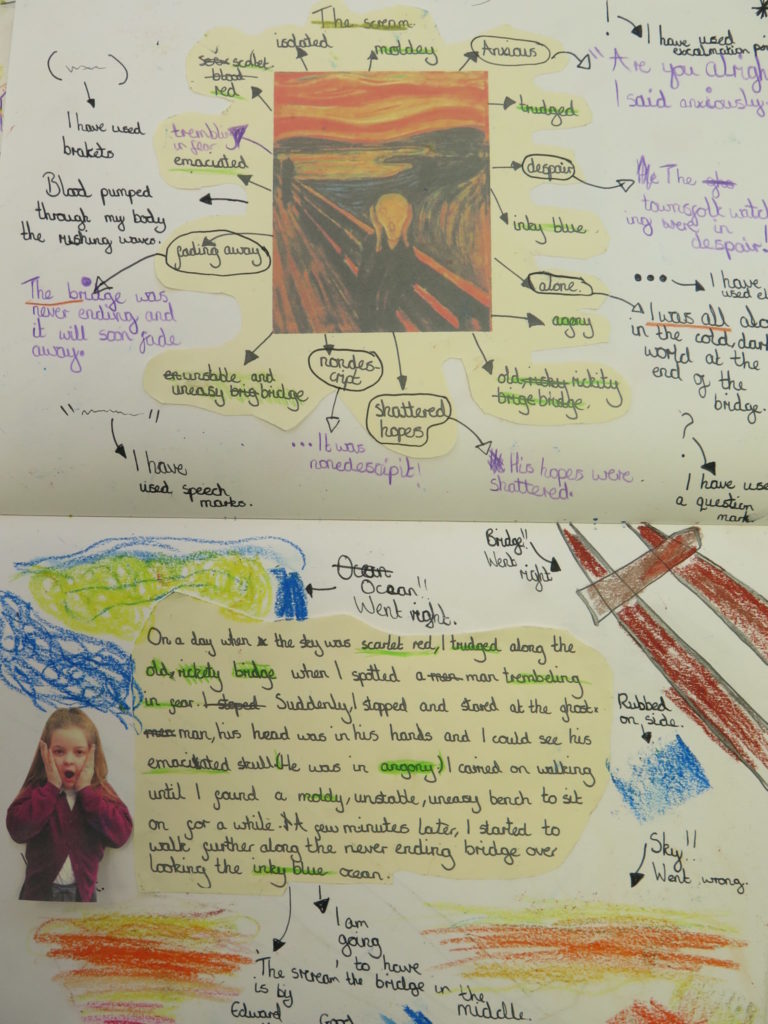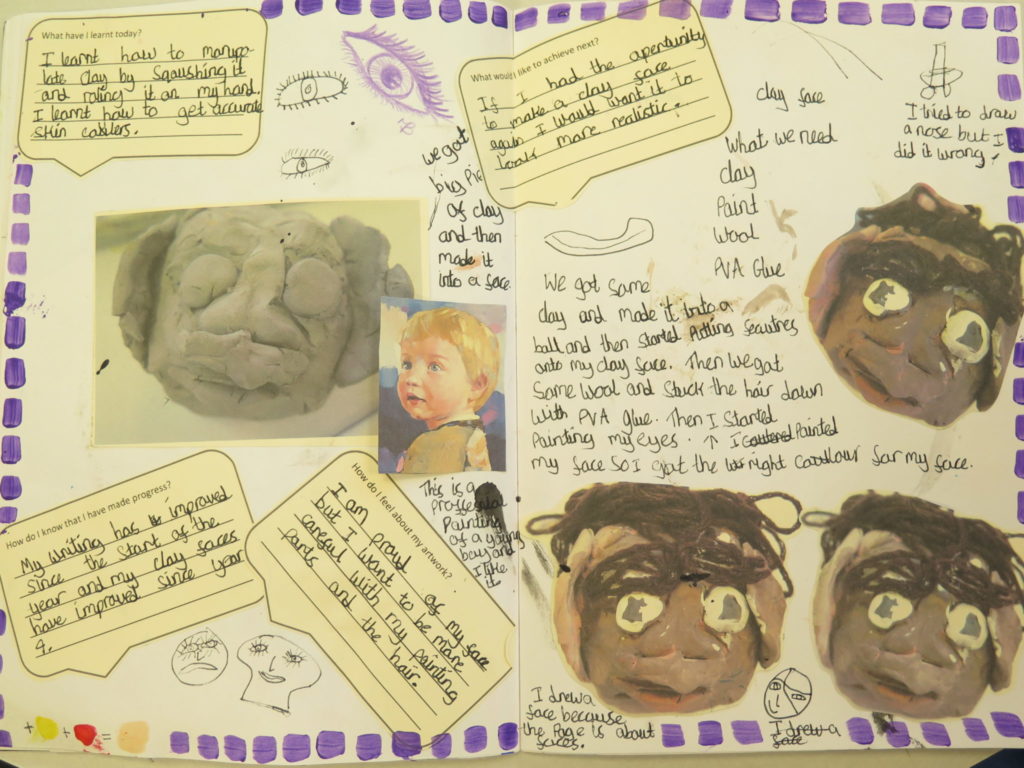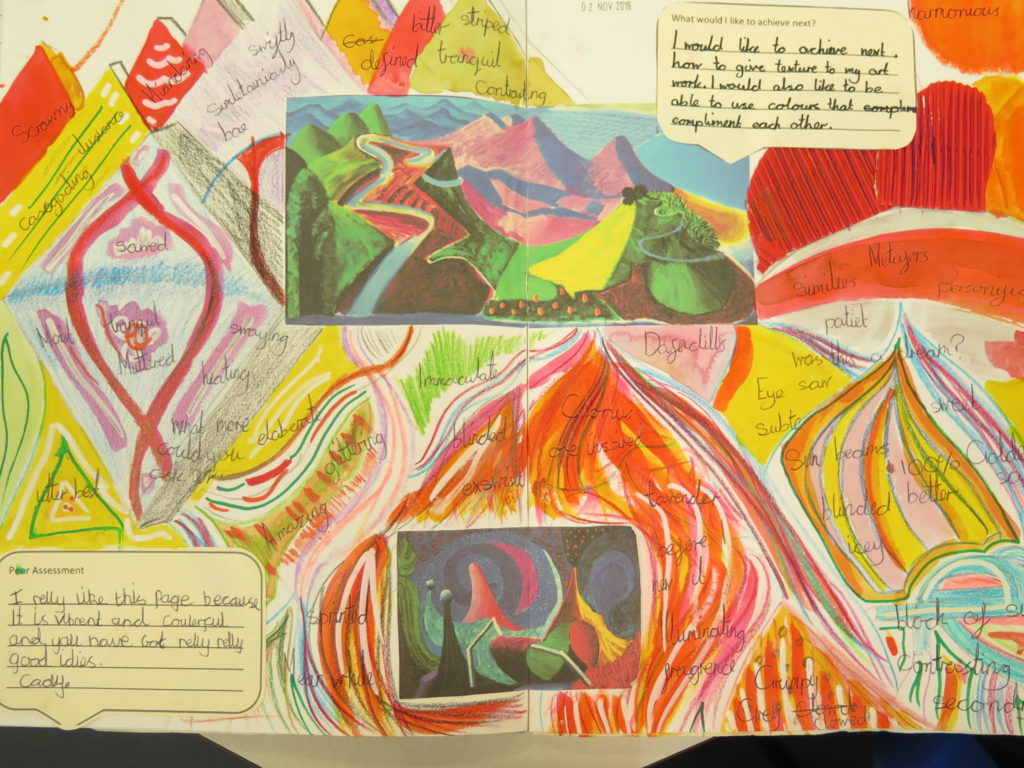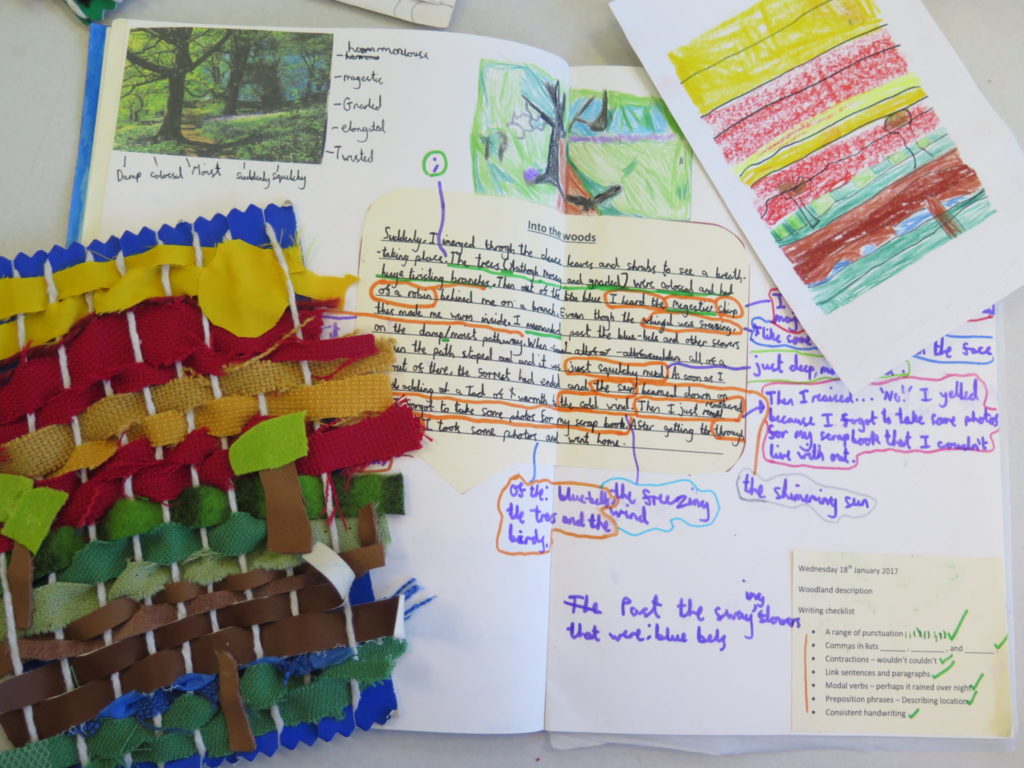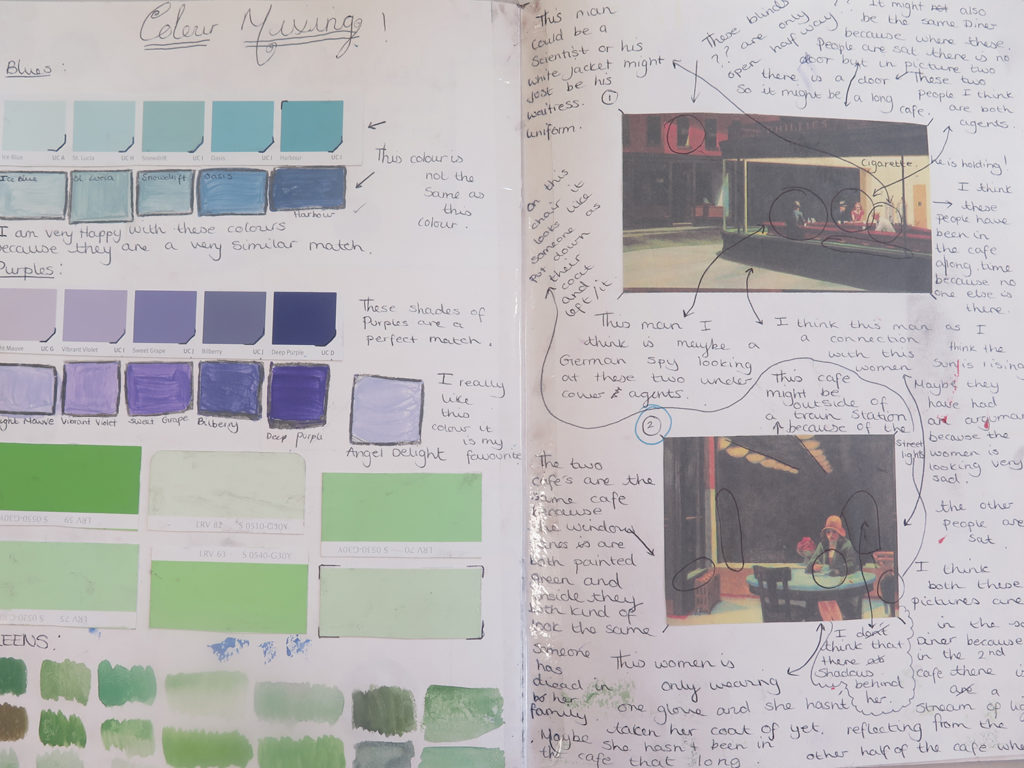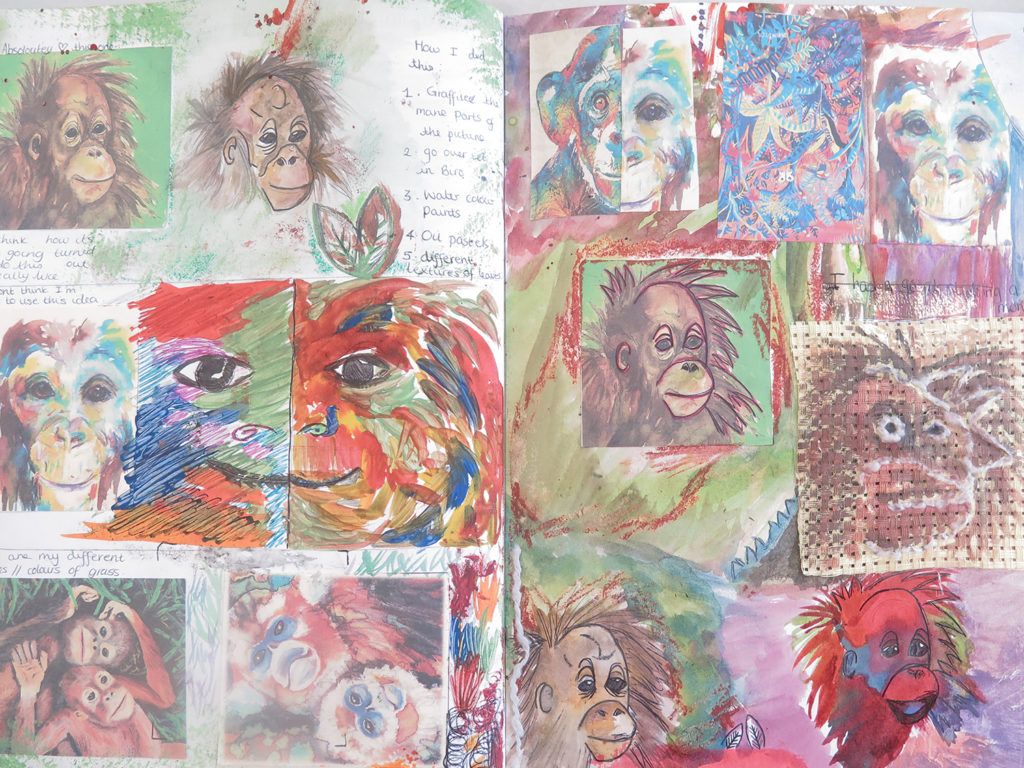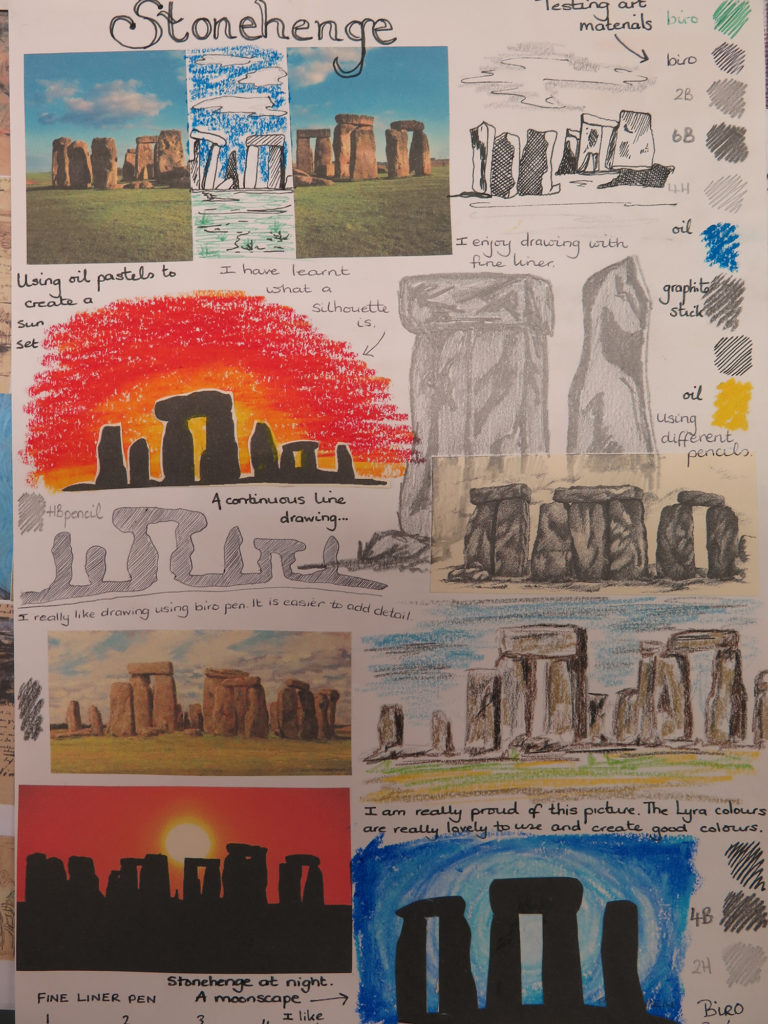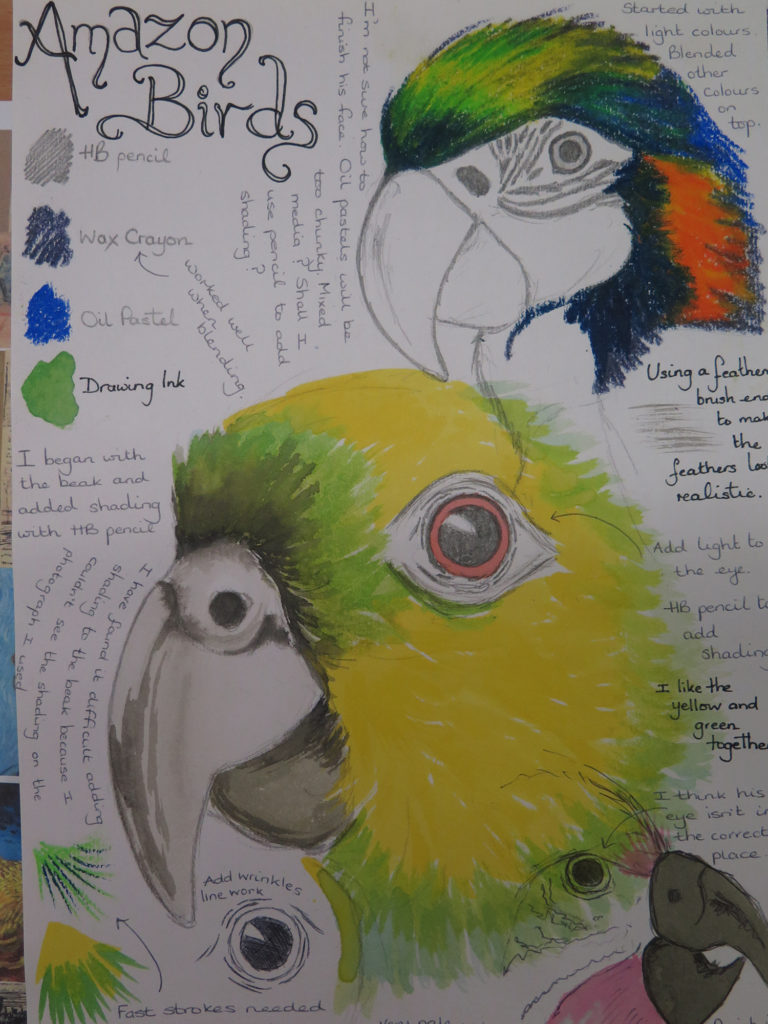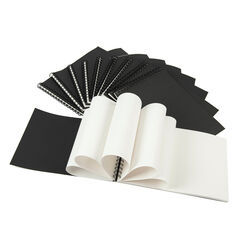Children in Key Stage 1 use sketchbooks in their classrooms during art lessons. When children visit the art room, Mrs Barrett often gives demonstrations and sets tasks to help develop the skill of working within a sketchbook.
Below are some examples of sketchbook activities from each year group.
Year 1
A simple independent, sorting exercise used with Year 1 children helps to develop their understanding of warm/cold colours and colour mixing. First the children sort images, using a colour wheel as a guide, and then add their own warm and cold colours using watercolours and powder paint. This activity allows children to use their sketchbooks in an exploratory way.
Independent tasks are a good opportunity to ask questions, such as:
- Which paint did you prefer to mix with? Can you explain why?
- Why have you chosen to place your colour on that page?
The page can then be referred to later in the year when using paint to create future work.
Year 2
The tables in the art room were covered with examples of work by artist Andy Goldsworthy, along with facts and information about his life and work. The children were asked to use the given information to record what they had learnt about the artist using a range of art media. All the responses were individual and creative. It was lovely to see children helping each other to read the facts and comment on each others’ sketchbook pages.
Year 3
Throughout Year 3 we work hard to train children in the use of sketchbooks as this is the first year they have significant time in our art room. The key areas we consider when using sketchbooks are:
- Gathering inspiration
- Exploring art media
- Developing understanding
- Recording responses
- Reviewing artwork
- Making modifications
- Evaluating
Here are some of the Year 3 activities:
After a trip to the Yorkshire Sculpture Park, the children spent time documenting their visit in their sketchbooks and learning about significant sculptors. They were asked to state their personal opinions regarding the artwork and then used these pages to create a non-fiction booklet about a chosen sculptor. The children were encouraged to present their work in an independent, creative way.
Post-it notes are a great way to add any relevant feedback, from either the teacher or peers, without it being written directly onto the pages or artwork.
We found teasel seed heads in the school grounds and used them in an observational drawing exercise. Children explored different media and were encouraged to write down any thoughts or feelings they had about the drawing process. We then dipped the teasel heads into ink and experimented with mark making. ‘Two stars and a Wish’ was then used as part of a simple self assessment. This can also be used to give constructive feedback between peers.
Before deciding what to include in their clay fossil, children used their sketchbooks to draw different fossilised plants and creatures. In sessions like this, children are able to self access a range of art media, often commenting on the different outcomes. They are left to explore without teacher intervention. Children seek help, advice and guidance if they choose to – otherwise they are left to explore and create.
Children explored watercolour techniques and used masking tape to create a straight edge to a painting. After spending time exploring in their sketchbooks, children were then confident to begin a watercolour painting on a larger scale.
After a history trip to Saltaire, we created sketchbook pages to document the visit. Our children enjoy the freedom to create sketchbook pages in this way. It inspires individual responses rather than 30 pieces of work that look exactly the same. The children then use these pages to develop a piece of artwork of their choice. It might be…
- A woven piece
- A clay house
- A painting
- A map
Choice is an important thing to children; it’s a way of being able to express themselves. Whether they are choosing to create something that is the same, similar or completely different to their peers – it’s important to allow children to make significant, independent, creative choices throughout their artistic journey. Sketchbooks are a great way to facilitate this.
Year 4
Children were researching, developing and designing – all linked to a class science project. They learnt about electricity – we considered the impact of pylons on the environment and formulated a project where the children designed their own. The sketchbook pages were busy with designs and annotations which were then used to inform model making.
Year 5
When working on a portrait project, children used their sketchbooks for a variety of activities. We continually learn and develop our skills of mark making using quick activities. These allow children time to discover new ways to create, consolidate existing skills or to simply explore different art media.
During our sessions in the art room, we spend time developing creative writing skills . We often use our own artwork, as well as other paintings, as inspiration for writing. Sketchbooks are a great way of documenting the creative writing process – from brainstorms, to ideas for initial paragraphs, to first drafts and creative edits. Children have said they feel more relaxed developing their writing this way as they can fully concentrate on their creative ideas.
Year 5 also use their sketchbooks to explore science topics in a creative way – such as investigating the similarities and differences between animals and humans. After using photographs to create small collages, children used tracing paper to create mixed-up portraits. They then moved on to independent drawing where the children produced a final piece. Sketchbooks are always on hand to test out ideas while working on final pieces.
Year 5 use sketchbooks to evaluate their creative learning journey and the subsequent artwork they have produced. They often share this critical dialogue with peers and are then capable of making informed decisions about the future development of their work. Work is never rubbed out or thrown away; instead children review their practice through annotations and visual corrections – an instant way of showing and documenting any progress they have made.
Year 6
By the time children reach Year 6, they are very comfortable in using their sketchbooks for a variety of purposes. Children are heavily independent and take charge of their own learning using their sketchbook as a vehicle to document their creative journey.
Our Year 6 children are confident to research ideas, gain inspiration and try out different techniques. For example, they researched the work of David Hockney prior to creating a large piece of work in his style. They also refined colour-mixing techniques and used paintings to inspire creative writing.
Sketchbooks are a great way to record any progress that is being made within a lesson or a project. We never use rubbers to erase work; instead, we make a series of attempts to document our learning journey.
Teacher example pages:
I sometimes sit with the children and complete the same task in my own sketchbook or create example pages prior to the lesson. This gives a model for less confident children and can extend the more able artists – they see the challenge and rise to it within their own book. I was worried at first that this might be daunting for some children, but they seem to enjoy using the examples as inspiration.
With thanks to Mandy Barrett and the children from Gomersal Primary School for this wonderful blog post.


